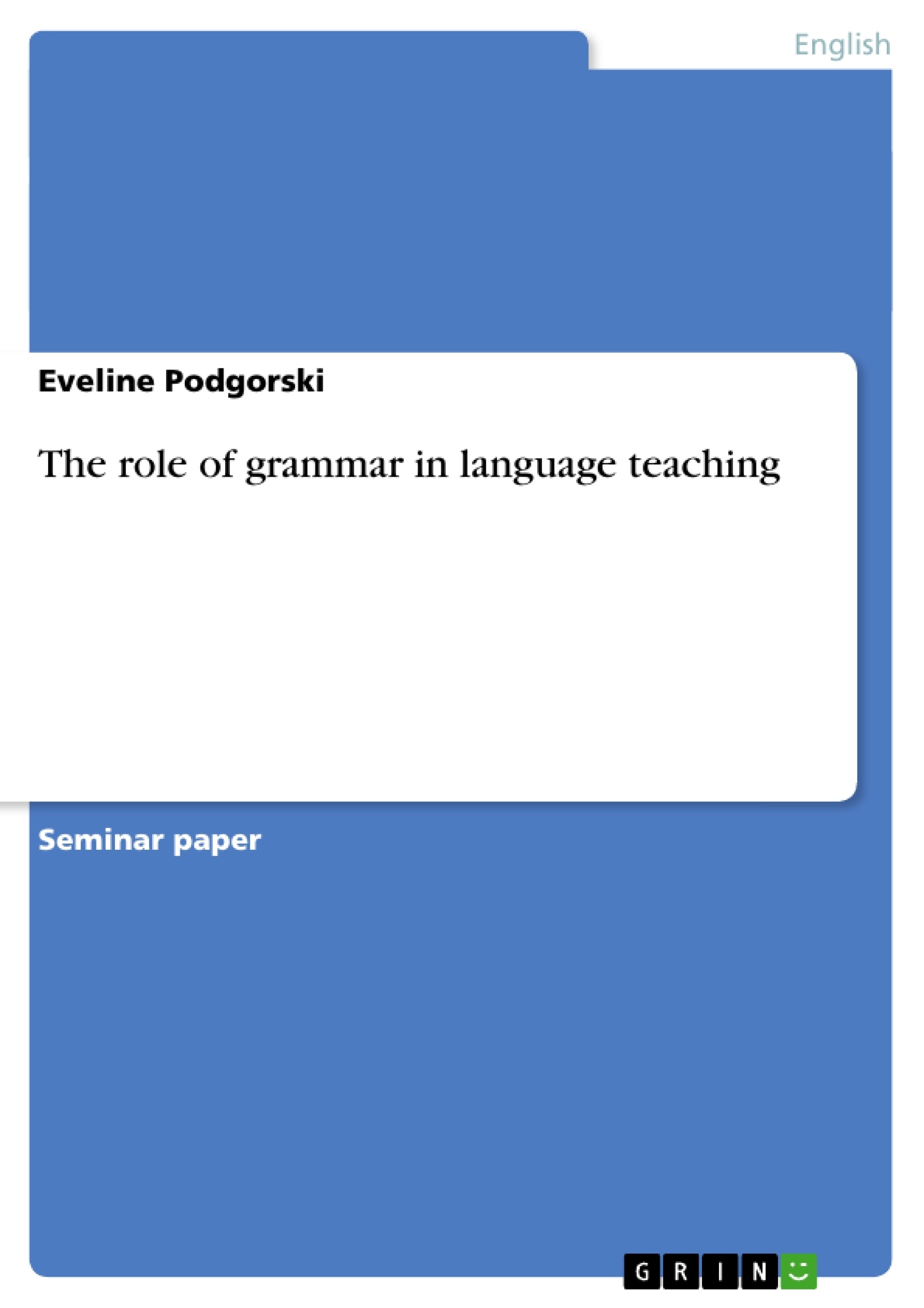Excerpt
Contents
1. Contents and structure of the term paper
2. A historical introduction into Grammar Teaching
3. Second Language Acquisition
3.1. The Interlanguage
3.2. The Teachability of Grammar
3.2.1. A study on the Teachability Hypothesis
4. Different options in Language Teaching
5. Conclusion
6. Bibliography
7. Appendix
1. Contents and structure of the term paper
Learning a new language always implies learning its grammar. In what depth should then teaching grammar be part of the teaching unit and what important aspects of the Second Language Acquisition should be considered by teachers in the classroom? There is also the question how the students in general acquire grammatical structures.
This paper first gives an introduction into the history of language teaching which is followed by an overview of different aspects of the Second Language Acquisition and an example for a study on the Teachability Hypothesis. I chose this study because it was a subject of interest in the seminar “Issues in Applied Linguistics” and was the topic my group worked on for a presentation. To show how grammar teaching is understood in the classroom, a summary of the different options in language teaching is given afterwards. The conclusion at the end not only serves as a summary of the paper but also sums up the answers to the questions asked above and shows the problems behind them. It is followed by a bibliography and an appendix.
2. A historical introduction into grammar teaching:
Grammar is considered to be an important part of a language and is therefore taught in detail using several different teaching methods. In the past Latin had been the most important second language - the lingua franca[1] - also because of its status as a medium of literacy. Therefore, there was not much desire for individuals to learn other languages aside from Latin. Although, the people’s interest for other languages grew in times of the Renaissance and teaching their grammar structures was always done through Latin. In the eighteenth century the grammar-translation methodology became more and more significant, which meant that languages and their grammar were learned by translation. (cf. Rutherford 1988; 17) Nowadays, Latin is the only language whose teaching is based entirely on translation.
There are two types of teaching methods which were developed in the 19th century: the Natural Method and the Direct Method. Both techniques of teaching have the same basis of idea, but do differ slightly. The Natural Method does not make any distinction between the acquisition of the first and the second language and treats the L2-learner as a L1-learner, whereas the Direct Method regards the second language as a new language which is not to be taught by translation but, for example, by showing different items.
In the 1970’s and 80’s researchers, such as, Krashen developed a scheme (cf. Ellis 1997; 47) concluding that grammar should not be taught at all to give pupils the opportunity to use the new language naturally and spontaneously. This proposal called “the zero option” has so far only been utilized in the Waldorf-Schools - no grammar teaching at all - and in special so-called immersion-classes, where half of the subjects such as science are taught in English without any focus on grammar structures.
Recently, many different teaching methods are combined to achieve the best results in the classroom because it is very difficult and monotonous to stick with only one methodology throughout the teaching unit. (Sharwood Smith 1988; 52)
3. Second Language Acquisition
The main focus in the Second Language Acquisition is the learner, whose language acquisition is influenced by many different factors.
One main factor which has enormous influence on the pupil’s Second Language Acquisition is the transfer from the mother tongue to the target language. At certain stages pupils produce sentences and questions using grammar structures from their first language or have difficulties acquiring rules in the second language they do not have in their mother tongue. Another factor would be the development of the pupil’s language and, connected with this, the ability to acquire structures he or she has been taught. Here, it is believed that the teaching program - which is absolutely necessary for the learner - has a great influence on what the pupil actually learns and therefore on his or her output. This influence does exist; unfortunately, it is not predictable if the pupil learns what has been taught and also whether he or she is then able to acquire it correctly. Further, some of the problems the learner faces in teaching programs include too many structures to be learned or if the language development of a pupil has not yet reached a certain stage to be actually able to learn a special structure. (cf. Pienemann 1995; 7)
[...]
[1] franc language (language for trade and communication)
- Quote paper
- Eveline Podgorski (Author), 2006, The role of grammar in language teaching, Munich, GRIN Verlag, https://www.grin.com/document/83868
Publish now - it's free























Comments